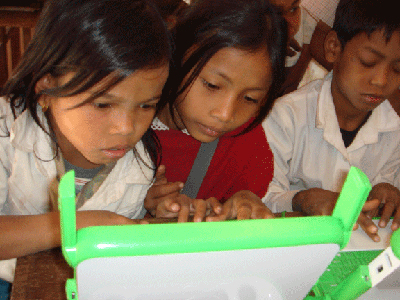
Welcome to the ezine produced by SGI Buddhists that prompts the positive, kindles the constructive, highlights the hopeful and leaves you feeling - well, up!


Giving laptops to children who live without electricity, the telephone or even running water seems crazy - but it's producing startling results
A clutch of children are darting around a dusty village in one of the poorest and most remote areas of Cambodia. They are measuring arms, legs, noses, each other - anything! Older kids are leaning over a computer in the dry heat, trying to understand how gears work. Later, they are going to use the measurements and their new knowledge of gears to animate robots. A small child shows another how to press a computer key to produce musical sounds.
These children, despite living without running water, electricity or the telephone, have access to the same educational learning opportunities as children in the developed world. How? Nicholas Negroponte gave each one a laptop.
Mr. Negroponte, founder of the MIT Media Lab, was
so knocked out by the results of his pilot project in the
‘Let me take two countries,
His vision led to the creation of the $100 laptop, which can be charged up with a crank or a salad spinner. His non-profit organization, One Laptop Per Child, believes that the computer could solve the predicament of the poor and, despite fierce opposition from industry giants, Microsoft and Intel, he is determined to spread education around the world - one laptop at a time.

